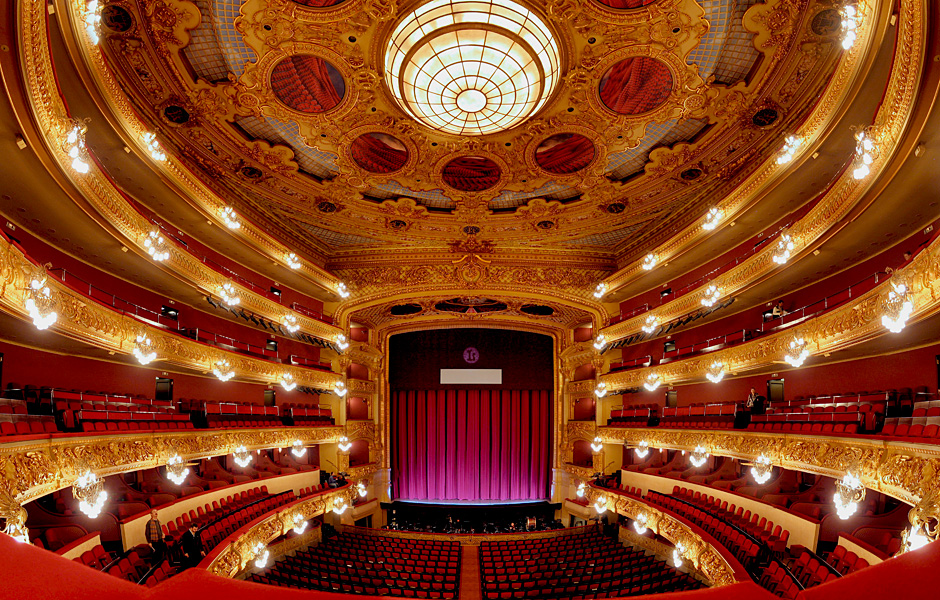Founded in 1847 on Barcelona's La Rambla, the Gran Teatre del Liceu is an opera house that has retained its role as a culture and arts centre throughout its history and one that represents one of the symbols of the city.
Today, it is a publicly-owned theatre – by the Catalan Regional Government, Barcelona City Council, Barcelona Provincial Council and the Ministry of Culture – under the administration of the Fundació del Gran Teatre del Liceu, which, besides the above institutions, incorporates the Patronage Committee and the old Societat del Gran Teatre del Liceu.
Its origins hark back to a Sociedad Dramática de Aficionados (Drama Aficionados Society), created in 1837 in the former convent of Montsió by members of the National Militia – a liberal organisation of armed citizens at that time – under the initiative of Manuel Gibert. The need to establish a music conservatory in a Barcelona that was expanding economically and demographically soon led to its conversion in 1838 into the Liceo Filármonico Dramático Barcelonés de S.M. la Reina Isabel II (Barcelona Dramatic Philharmonic Lyceum of HM Queen Isabel II), which incorporated the cultivation of Italianate song and music to that of the theatre.
The success of this institution and the desire of a group of leading members of Barcelona's bourgeoisie, under Joaquim de Gispert i d'Anglí, led to the construction of a new and ambitious theatre, worthy of the importance of the city – which has lasted for more than a century and a half – on the site of the former Trinitarian convent on La Rambla, deconsecrated like so many others in the city by laws of dissolution. The first building, solemnly opened on 4 April 1847, was constructed according to the plans of architect Miquel Garriga i Roca, soon assisted by Josep Oriol Mestres. The project was financed through trading shares – which meant the private ownership of a large part of the boxes and seats of the future theatre – giving rise to the Societat del Gran Teatre del Liceu, known as the Societat de Propietaris (Company of Owners), which became solely responsible from 1855 onwards for the Gran Teatre del Liceu, when it was legally separated from the Conservatori del Gran Teatre del Liceu.
From the start, the running of the theatre was entrusted to concessionary show companies, which were obliged to stage a specific number of productions and which received, in exchange, the earnings from the sale of tickets not reserved for the Societat. This situation would last until 1980.
By the last quarter of the twentieth century, this system was no longer viable, and in 1980, in light of the danger of the disappearance of an institution of such international cultural prestige as the Liceu, the first government of the Catalan Regional Government – together with Barcelona City Council and the Societat del Gran Teatre del Liceu, to which would be added Barcelona Provincial Council in 1985 and the Ministry of Culture in 1986 – created the Consorci del Gran Teatre del Liceu, which took over the administration and running of the theatre.
The fire of 31 January 1994, which destroyed the main hall and the stage – and which had an extraordinary social impact on Catalan society – radically questioned the very existence of the theatre. In order to rebuild and improve this emblematic building, a new legal basis was required for its public ownership, so the Fundació del Gran Teatre del Liceu was created in 1994, and the Societat del Gran Teatre del Liceu assigned ownership to the public administrations (an assignment ratified in 1997). Based on the existing Refurbishment and Extension Project of Ignasi de Solà-Morales (dating from 1986, to which would be added the 1988 project of Xavier Fabré and Lluís Dilmé), the theatre was rebuilt, and the new Liceu opened its doors on 7 October 1999. The new opera house boasted an appearance that was faithful to the previous one but it was now equipped with a highly advanced technical infrastructure and had been enlarged by being extended over a number of neighbouring sites on La Rambla.
Barcelona Liceu Map
Barcelona Pictures
We offer you all the tourist highlights of Barcelona city through the pictures of the main sights and attractions. Visit our Collection of photos about Barcelona. We invite you to enjoy this pictures.



